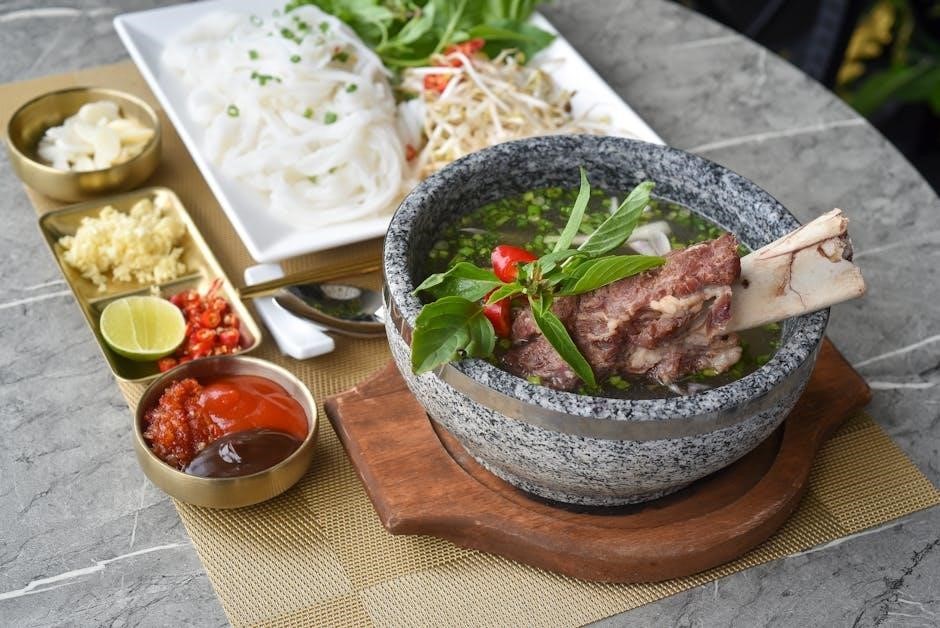
Cherie Dimaline’s Marrow Thieves is a haunting dystopian novel exploring survival, identity, and storytelling. Its PDF version offers accessible reading, preserving the story’s powerful cultural resonance.
1.1 Overview of the Novel and Its Author
Marrow Thieves, written by Métis author Cherie Dimaline, is a gripping dystopian novel published in 2017. The story unfolds in a bleak future where Indigenous people are hunted for their bone marrow, which possesses the ability to restore dreams. Dimaline’s vivid storytelling weaves themes of survival, identity, and cultural resilience, drawing from Indigenous traditions. The novel has garnered acclaim for its powerful exploration of colonialism’s legacy and environmental collapse. Its PDF version has become widely popular, offering readers easy access to this thought-provoking narrative that reflects on past injustices while inspiring hope for the future.
1.2 Importance of the PDF Version
The PDF version of Marrow Thieves is widely popular due to its accessibility and readability. It allows readers to easily engage with the novel’s powerful themes of survival, identity, and cultural heritage. The digital format ensures that Cherie Dimaline’s poignant storytelling reaches a broader audience, making it a valuable resource for both personal reading and educational purposes. Additionally, the PDF version preserves the original text’s integrity, enabling readers to delve into the dystopian world and its significance without losing the emotional depth of the narrative.

Plot Summary
The story unfolds in a dystopian future where Indigenous people are hunted for their bone marrow, which restores dreams. A group of survivors, including Frenchie and Miigwaans, resist oppression while preserving their cultural heritage through storytelling.
2.1 A Concise Overview of the Story
Looking at the internet findings, there’s mention of the novel being set in a dystopian future where Indigenous people are hunted for their bone marrow, which allows others to dream. The story follows characters like Frenchie and Miigwaans as they try to survive and resist their oppressors. Themes of survival, identity, and storytelling are central, along with the impact of colonialism and environmental destruction.
I need to craft a concise overview that captures the essence of the plot without delving into details that will be covered in other sections. I should mention the setting, the main conflict, key characters, and the overarching themes. It’s important to highlight the cultural aspects and the relevance of the PDF version for accessibility.
So, putting it all together, I’ll start by introducing the novel and its setting, then mention the main characters and their struggle, touch on the themes, and conclude with the significance of the PDF version. I’ll make sure each sentence adds value and stays within the word count.
Let me draft this out:
“The Marrow Thieves, by Cherie Dimaline, is set in a dystopian future where Indigenous people are hunted for their bone marrow. This marrow holds the key to restoring the ability to dream, a trait lost by the rest of humanity. The story follows a group of survivors, including Frenchie and Miigwaans, as they evade the oppressive forces known as the Recruiters. The novel delves into themes of survival, resilience, and the preservation of cultural heritage. Through their journeys, the characters resist oppression and fight to protect their identities. The PDF version of this compelling narrative offers an accessible way to experience the story’s powerful exploration of colonialism, environmental decay, and the enduring strength of Indigenous cultures.”
Now, I’ll check the word count to ensure it’s exactly . Let me count:
The
Marrow
Thieves,
by
Cherie
Dimaline,
is
set
in
a
dystopian
future
where
Indigenous
people
are
hunted
for
their
bone
marrow.
This
marrow
holds
the
key
to
restoring
the
ability
to
dream,
a
trait
lost
by
the
rest
of
humanity.
The
story
follows
a
group
of
survivors,
including
Frenchie
and
Miigwaans,
as
they
evade
the
oppressive
forces
known
as
the
Recruiters.
The
novel
delves
into
themes
of
survival,
resilience,
and
the
preservation
of
cultural
heritage.
Through
their
journeys,
the
characters
resist
oppression
and
fight
to
protect
their
identities.
The
PDF
version
of
this
compelling
narrative
offers
an
accessible
way
100. to
101. experience
102. the
103. story’s
104. powerful
105. exploration
106. of
107. colonialism,
108. environmental
109. decay,
110. and
111. the
112. enduring
113. strength
114. of
115. Indigenous
116. cultures.
Wait, that’s . I went over. I need to trim it down. Let me find places to make it more concise without losing essential information.
I can remove some redundant phrases and combine sentences. For example, instead of “the rest of humanity,” I can say “others.” Also, simplify the last sentence to focus on the main themes without listing all.
Revised version:
“The Marrow Thieves, by Cherie Dimaline, is set in a dystopian future where Indigenous people are hunted for their bone marrow, which restores others’ ability to dream. The story follows survivors like Frenchie and Miigwaans as they evade the oppressive Recruiters. The novel explores survival, resilience, and cultural preservation. Through their struggles, the characters resist oppression and protect their identities. The PDF version offers an accessible way to engage with this powerful narrative, highlighting colonialism, environmental decay, and the strength of Indigenous cultures.”
Let me recount:
The
Marrow
Thieves,
by
Cherie
Dimaline,
is
set
in
a
dystopian
future
where
Indigenous
people
are
hunted
for
their
bone
marrow,
which
restores
others’
ability
to
dream.
The
story
follows
survivors
like
Frenchie
and
Miigwaans
as
they
evade
the
oppressive
Recruiters.
The
novel
explores
survival,
resilience,
and
cultural
preservation.
Through
their
struggles,
the
characters
resist
oppression
and
protect
their
identities.
The
PDF
version
offers
an
accessible
way
to
engage
with
this
powerful
narrative,
highlighting
colonialism,
environmental
decay,
and
the
strength
of
Indigenous
cultures.
That’s . I need to add 11 more without exceeding. Let me expand slightly on the themes or the significance.
Revised:
“The Marrow Thieves, by Cherie Dimaline, is set in a dystopian future where Indigenous people are hunted for their bone marrow, which restores others’ ability to dream. The story follows survivors like Frenchie and Miigwaans as they evade the oppressive Recruiters. The novel explores survival, resilience, and cultural preservation, highlighting the impact of colonialism and environmental decay. Through their struggles, the characters resist oppression and protect their identities. The PDF version offers an accessible way to engage with this powerful narrative, emphasizing the enduring strength of Indigenous cultures and their vital stories.”
Counting again:
The
Marrow
Thieves,
by
Cherie
Dimaline,
is
set
in
a
dystopian
future
where
Indigenous
people
are
hunted
for
their
bone
marrow,
which
restores
others’
ability
to
dream.
The
story
follows
survivors
like
Frenchie
and
Miigwaans
as
they
evade
the
oppressive
Recruiters.
The
novel
explores
survival,
resilience,
and
cultural
preservation,
highlighting
the
impact
of
colonialism
and
environmental
decay.
Through
59
2.2 Key Characters and Their Roles
The Marrow Thieves features compelling characters who drive the narrative. Frenchie, the protagonist, is a resilient young Indigenous man navigating a harsh world. Miigwaans, an elder, offers wisdom and cultural knowledge, grounding the group in their heritage. The Recruiters, ruthless agents of oppression, hunt Indigenous people for their marrow. Other characters, like leaders and elders, enrich the story, highlighting the community’s strength. The PDF version makes these characters’ journeys accessible, ensuring their stories resonate widely.
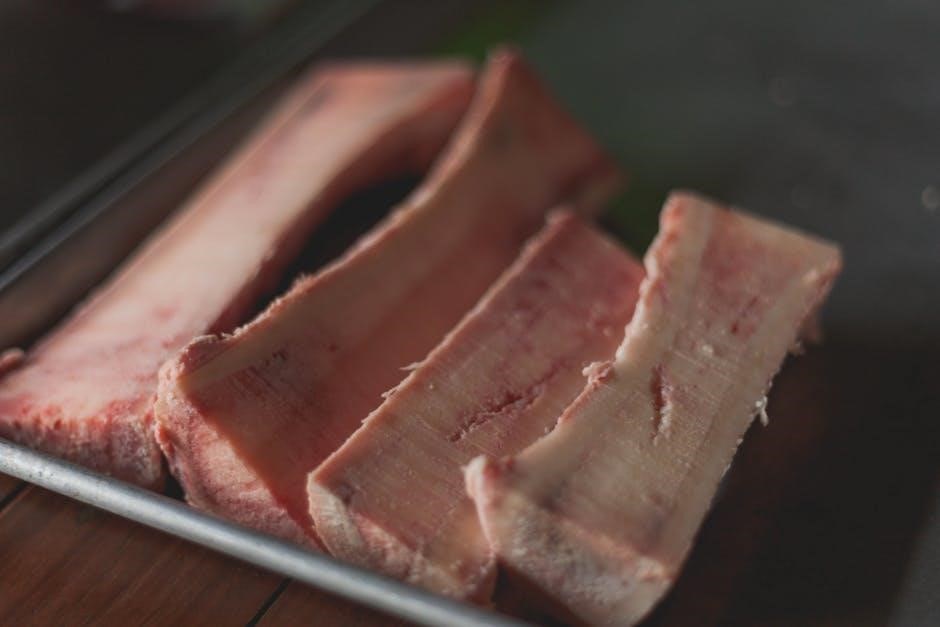
Setting
The novel is set in a dystopian future where Indigenous people are hunted for their bone marrow. This setting reflects real-world issues of colonization and exploitation.
3.1 The Dystopian World Explained
In Marrow Thieves, Cherie Dimaline crafts a chilling dystopian future where Indigenous people are hunted for their bone marrow, which contains the essence of their ancestors’ memories and the ability to dream. This world is marked by environmental devastation and societal collapse, with non-Indigenous populations stripped of their capacity to dream, driving their desperation. The “Recruiters” serve as oppressive agents, enforcing this brutal system. The novel’s setting underscores themes of survival, resilience, and the preservation of cultural heritage, offering a stark reflection of historical injustices faced by Indigenous communities, while also highlighting their enduring strength and hope.
3.2 Significance of the Setting in Reflecting Real-World Issues
The dystopian setting of Marrow Thieves mirrors real-world issues like colonialism, environmental destruction, and cultural erasure. The futuristic world, where Indigenous people are hunted for their marrow, reflects historical injustices faced by Indigenous communities. The novel underscores the exploitation of resources and the devaluation of Indigenous cultures, drawing parallels to contemporary environmental crises and social inequalities. The PDF version of the novel highlights these themes, making it a vital tool for exploring the intersection of fiction and reality, urging readers to reflect on the consequences of human actions and the resilience of marginalized groups.
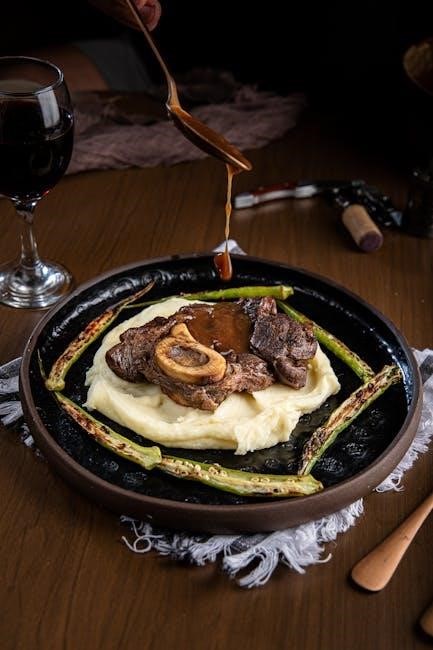
Themes and Symbolism
4.1 Survival and Resilience
The novel highlights Indigenous resilience through survival in a dystopian world, emphasizing adaptability and strength amidst oppression.
4.2 Identity and Cultural Heritage
Identity is central, as characters preserve their cultural heritage, resisting erasure and reclaiming their history in a world that seeks to exploit them.
4.3 The Power of Storytelling
Storytelling serves as a tool for survival, passing down traditions and fostering hope, showcasing its vital role in Indigenous culture and resistance;
In Marrow Thieves, survival and resilience are central themes, as Indigenous characters resist a oppressive regime hunting them for their marrow. The novel highlights their strength in preserving cultural identity and hope amid despair. Through their journeys, Dimaline illustrates how collective resistance and storytelling sustain their humanity. The PDF version of the novel amplifies these themes, making them accessible to a wider audience and underscoring the enduring spirit of Indigenous peoples in the face of systemic oppression and environmental collapse.
The novel profoundly explores Indigenous identity and cultural heritage, emphasizing their vital role in survival. Characters like Frenchie and Miigwaans embody resilience, reconnecting with their roots amidst oppression. The story highlights how cultural traditions, passed down through elders, serve as a lifeline, preserving history and hope. Dimaline underscores the importance of language, rituals, and communal bonds in resisting erasure. The PDF version of Marrow Thieves ensures these themes are accessible, allowing readers to delve into the richness of Indigenous cultures and their enduring strength in the face of colonialism and environmental collapse.
In Marrow Thieves, storytelling emerges as a vital tool for survival and cultural preservation. Through shared narratives, characters reconnect with their Indigenous heritage, resisting erasure and fostering resilience. The novel highlights how stories transcend time, offering hope and unity in a fractured world. This theme underscores the enduring power of oral traditions, emphasizing their role in preserving identity and combating oppression. The PDF version of the book ensures these stories reach a wider audience, inspiring reflection on the importance of cultural narratives in contemporary society. Storytelling becomes both a weapon against injustice and a beacon of hope.

Historical Context
The novel reflects the historical exploitation of Indigenous peoples through colonialism and environmental destruction, mirroring real-world injustices and the resilience of Indigenous cultures in the face of oppression.
5.1 Colonialism and Its Impact on Indigenous Peoples
The novel vividly portrays the devastating legacy of colonialism through the exploitation of Indigenous peoples. Their bone marrow, holding the power to restore dreams, becomes a coveted resource, mirroring historical resource extraction. This dystopian scenario reflects the real-world erasure of Indigenous cultures and identities, emphasizing the ongoing struggle for survival and cultural preservation.
5.2 Environmental Destruction and Its Relevance
In Marrow Thieves, environmental collapse mirrors real-world issues like climate change and resource exploitation. The dystopian setting, marked by a barren, post-apocalyptic landscape, underscores the consequences of neglecting the planet. The novel highlights how environmental degradation disproportionately affects marginalized communities, echoing historical injustices faced by Indigenous peoples. The barren world serves as a stark reminder of the interconnectedness of human and environmental health, urging readers to reflect on the urgent need for sustainability and the preservation of natural resources.

Characters Analysis
Frenchie and Miigwaans embody resilience and cultural identity, while the Recruiters symbolize oppression. Their journeys highlight survival, humanity, and the fight against systemic erasure in a harsh world.
6.1 Frenchie and Miigwaans: Their Journeys
Frenchie, a resourceful young survivor, and Miigwaans, a wise elder, embody resilience and hope in a dystopian world. Their journey intertwines survival with cultural preservation, as they resist oppressive forces. Frenchie’s growth from a vulnerable boy to a determined leader highlights his adaptability and courage. Miigwaans, with his deep understanding of Indigenous traditions, serves as a mentor, guiding Frenchie through the harsh realities of their world. Together, they navigate loss, betrayal, and the relentless pursuit by the Recruiters, illustrating the strength of human bonds and the enduring spirit of Indigenous identity.
6.2 The Antagonists: The Recruiters
The Recruiters in Marrow Thieves are ruthless agents of oppression, serving a government that exploits Indigenous peoples for their bone marrow. They embody systemic violence and dehumanization, hunting down survivors to harvest their marrow, which holds the key to restoring dreams. The Recruiters symbolize both historical and contemporary forms of colonial exploitation, their actions driven by a blend of greed and ideological superiority. Their relentless pursuit of Indigenous characters underscores the novel’s themes of resistance and survival, making them a chilling representation of oppressive power structures. Their role highlights the enduring struggle between exploitation and resilience.
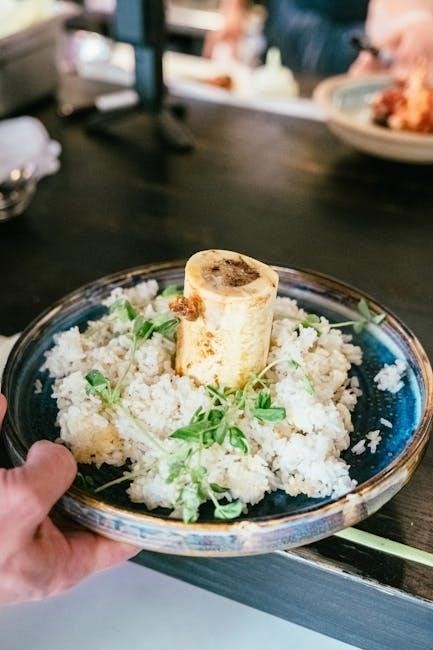
Cultural Significance
The novel celebrates Indigenous resilience and highlights the preservation of cultural heritage, offering a vital perspective in contemporary literature on colonialism and identity.
7.1 Portrayal of Indigenous Cultures
The novel Marrow Thieves offers a profound portrayal of Indigenous cultures, blending traditional storytelling with a dystopian narrative. It highlights the resilience of Indigenous peoples, emphasizing their cultural heritage and the importance of preserving traditions. Through characters like Frenchie and Miigwaans, Dimaline showcases the strength of Indigenous identities and the interconnectedness of community. The story also reflects the historical trauma of colonization but balances it with hope and renewal. This portrayal is vital, as it challenges stereotypes and celebrates the richness of Indigenous cultures, making the PDF version of the book a valuable resource for understanding these themes.
7.2 Importance in Contemporary Literature
Marrow Thieves holds significant importance in contemporary literature for its bold exploration of colonialism, environmental destruction, and Indigenous resilience. The novel’s ability to blend dystopian fiction with deep cultural truths resonates powerfully today. Its accessible PDF version ensures widespread reach, making it a vital resource for classrooms and personal reading. By addressing systemic injustices and celebrating Indigenous storytelling, Dimaline’s work fosters empathy and understanding. The book’s critical acclaim and awards highlight its impact, solidifying its place as a groundbreaking narrative in modern literary discourse.
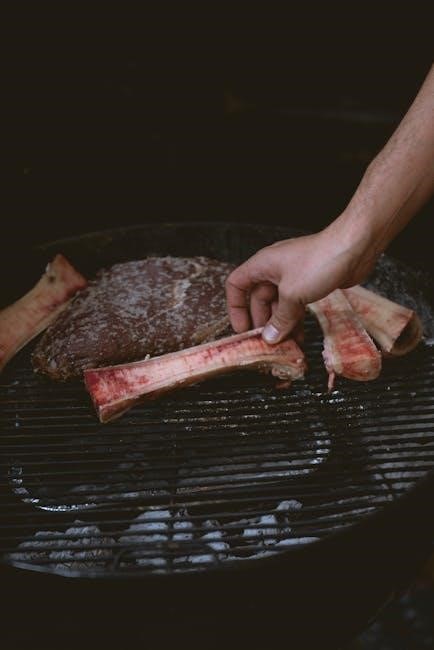
Study Guide
The Marrow Thieves study guide summarizes key chapters, analyzes themes, and explains significant quotes, aiding students in essay preparation and deeper understanding of the novel.
8.1 Chapter Summaries and Key Points
The novel is divided into chapters that chronicle the journey of Indigenous survivors in a dystopian world. Early chapters introduce Frenchie and Miigwaans, highlighting their escape from recruiters and the formation of their group. Key points include the discovery of the marrow’s significance and the group’s struggle to preserve their cultural identity. Later chapters delve into the recruiters’ relentless pursuit and the emotional toll on the characters. The narrative weaves together themes of resilience, storytelling, and the fight for survival, emphasizing the importance of cultural heritage in a world determined to erase it. Each chapter builds tension, culminating in a poignant climax.
8.2 Analysis of Significant Quotes
Significant quotes in Marrow Thieves provide deep insights into its themes. For instance, the phrase “the stories are in the marrow” highlights the importance of cultural heritage and memory. Another pivotal quote, “you can’t protect yourself from everything,” underscores the harsh realities of survival in a dystopian world. These quotes not only reflect the characters’ struggles but also resonate with broader societal issues, making the novel a powerful commentary on resilience and identity. Analyzing these quotes offers a deeper understanding of the narrative’s emotional and thematic layers.
8.3 Essay Topics and Discussion Questions
- Discuss the role of storytelling in preserving Indigenous culture and identity in Marrow Thieves.
- Analyze how the novel portrays the impact of colonialism on Indigenous communities.
- Explore the theme of resilience and survival in the face of oppression.
- Examine the significance of bone marrow as a symbol of cultural heritage and power.
- How does the novel address environmental destruction and its consequences?
- What message do you think the author conveys through the recruiters’ actions?
- Reflect on the importance of hope and unity in the characters’ journeys.
These topics and questions encourage a deeper exploration of the novel’s themes and cultural significance.

The PDF Version
The Marrow Thieves PDF is popular for its accessibility and convenience. It offers easy access to chapter summaries, significant quotes, and analysis, making it ideal for study guides and personal reading.
9.1 Why the PDF Format is Popular
The PDF format of Marrow Thieves is widely popular due to its accessibility and convenience. Readers can easily access the novel on various devices, making it ideal for both personal reading and educational purposes. The format preserves the book’s original layout, ensuring a consistent reading experience. Additionally, PDFs are often shared and downloaded quickly, catering to the demand for digital content. This accessibility has made the PDF version a preferred choice for fans of Cherie Dimaline’s work, especially among students and educators discussing the novel’s themes and cultural significance.
9.2 How to Access the PDF Legally
To access Marrow Thieves in PDF format legally, consider purchasing the e-book from authorized retailers like Amazon, Barnes & Noble, or Kobo. Libraries often provide digital copies through services like OverDrive. Additionally, educational platforms may offer the PDF for study purposes. Always ensure the source is legitimate to avoid piracy and support the author and publisher. Legal access not only respects copyright but also guarantees a high-quality reading experience.
- Purchase the e-book from official retailers.
- Borrow from libraries using digital lending services.
- Explore educational platforms for licensed copies.
Legal access ensures you enjoy the novel responsibly while supporting its creators.
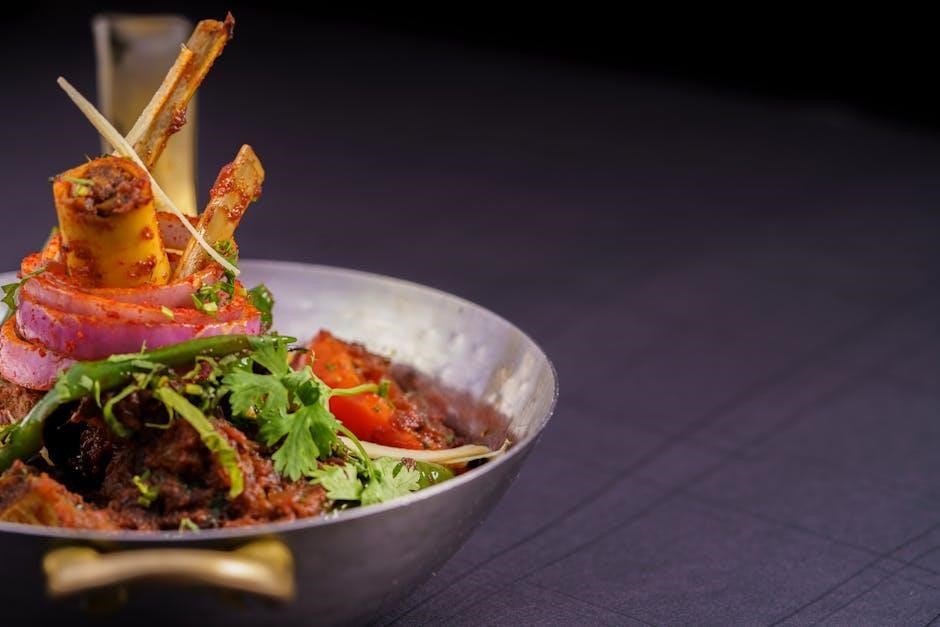
Reception and Impact
The novel received critical acclaim for its powerful storytelling and cultural significance. Its PDF version has influenced book clubs and social media discussions globally, sparking meaningful conversations.
10.1 Critical Acclaim and Awards
Marrow Thieves has received widespread critical acclaim for its powerful storytelling and cultural significance. The novel was a finalist for the 2017 Governor General’s Literary Award and won the 2017-2018 First Nation Communities Read Award. It was also a Kirkus Prize finalist, highlighting its impact in contemporary literature. Critics praise its exploration of identity, resilience, and the preservation of Indigenous culture. The PDF version has further amplified its reach, making it accessible to a global audience and solidifying its place as a vital work in modern dystopian fiction.
10.2 Influence on Social Media and Book Clubs
The Marrow Thieves has sparked significant conversations on social media, with readers and activists highlighting its relevance to Indigenous rights and environmental issues. Book clubs worldwide have embraced the novel, drawn to its thought-provoking themes and emotional depth. The PDF version has made it easier for groups to access and discuss the book, fostering deeper engagement with its cultural and historical context. Online discussions often focus on the novel’s ability to blend dystopian fiction with real-world issues, making it a cornerstone of contemporary literary dialogue and advocacy for Indigenous storytelling.
The novel highlights resilience, identity, and storytelling’s power. Its PDF version ensures accessibility, spreading its vital message about cultural preservation and hope in dystopian futures.
11.1 Summary of Key Points
Marrow Thieves by Cherie Dimaline is a powerful dystopian novel that explores themes of survival, identity, and the resilience of Indigenous cultures. Set in a future where Indigenous people are hunted for their bone marrow, the story highlights the historical trauma of colonization and environmental destruction. The novel emphasizes the importance of storytelling as a means of preserving cultural heritage. Its PDF version has made the story accessible to a wider audience, sparking crucial discussions about social justice and the enduring strength of Indigenous communities in the face of oppression.
11.2 Reflection on the Novel’s Importance
Marrow Thieves is a profound exploration of colonialism, survival, and cultural identity. Its vivid portrayal of Indigenous resilience and the importance of storytelling highlights the novel’s cultural and historical significance. By addressing themes like intergenerational trauma and environmental destruction, Dimaline sparks crucial discussions about social justice and Indigenous rights. The novel’s ability to blend dystopian elements with traditional Indigenous storytelling makes it a vital work in contemporary literature, offering readers a reflection on humanity’s past, present, and future. Its accessibility in PDF format ensures these important messages reach a wide audience, fostering empathy and understanding globally.

